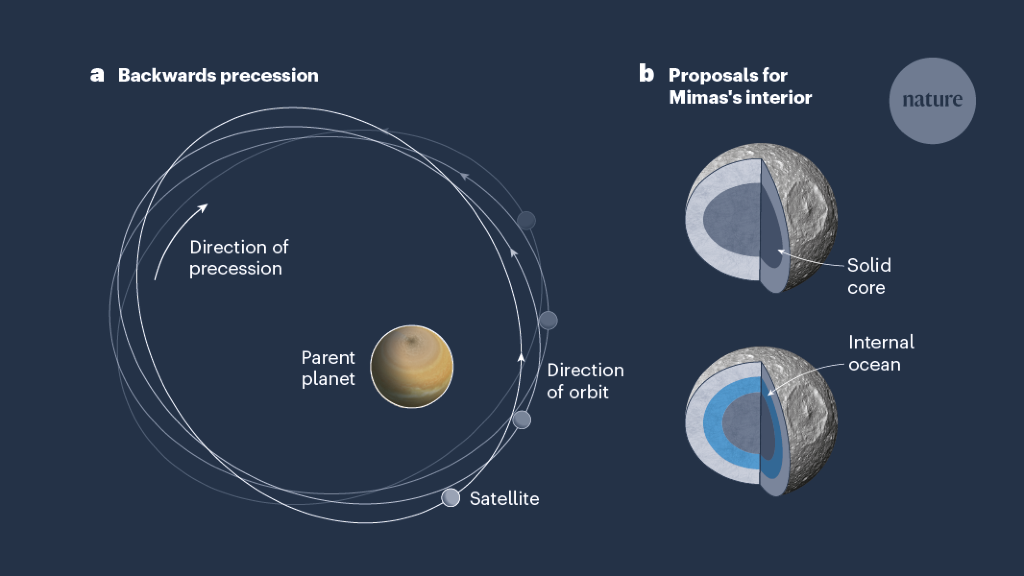Concepts de base
The author argues that despite initial assumptions, the small moon Mimas has an internal ocean, challenging previous criteria set by other ocean moons like Europa and Enceladus.
Résumé
Recent discoveries in the outer Solar System have challenged existing beliefs about moon oceans. While typically inferred from known ocean moons like Europa and Enceladus, new findings suggest that even smaller moons like Mimas could harbor internal oceans. The surprising revelation of Mimas's potential internal ocean prompts a reevaluation of the criteria used to identify such features on celestial bodies.
Personnaliser le résumé
Réécrire avec l'IA
Générer des citations
Traduire la source
Vers une autre langue
Générer une carte mentale
à partir du contenu source
Voir la source
www.nature.com
Mimas’s surprise ocean prompts an update of the rule book for moons
Stats
"results reported by Lainey et al.1 in Nature"
Citations
Idées clés tirées de
by Mati... à www.nature.com 02-07-2024
https://www.nature.com/articles/d41586-024-00194-6
Questions plus approfondies
How might the discovery of an internal ocean on Mimas impact future space exploration missions?
The discovery of an internal ocean on Mimas could significantly impact future space exploration missions by shifting the focus towards exploring moons previously deemed less likely to harbor life. This finding opens up new possibilities for investigating habitable environments beyond Earth within our own Solar System. Future missions may prioritize Mimas and other similar moons for further study, potentially leading to groundbreaking discoveries about the potential for life in unexpected places.
What implications could this finding have on our understanding of habitable environments beyond Earth?
The discovery of an internal ocean on Mimas challenges previous assumptions about what constitutes a habitable environment beyond Earth. It suggests that subsurface oceans may be more common than previously thought, expanding the range of celestial bodies where life could potentially exist. This finding broadens our understanding of the conditions necessary for life to thrive and highlights the importance of considering diverse environments when searching for extraterrestrial life.
How can scientists ensure accurate detection of subsurface oceans on distant moons with limited direct observation capabilities?
To ensure accurate detection of subsurface oceans on distant moons with limited direct observation capabilities, scientists can employ a combination of remote sensing techniques and theoretical modeling. Remote sensing instruments onboard spacecraft can analyze surface features, gravitational fields, and magnetic fields to infer the presence of subsurface oceans. Additionally, advanced computer models can simulate different scenarios based on available data to refine predictions about hidden water reservoirs beneath icy surfaces. Collaboration between different scientific disciplines and continued technological advancements will be crucial in improving our ability to detect subsurface oceans accurately in distant planetary bodies.
0
